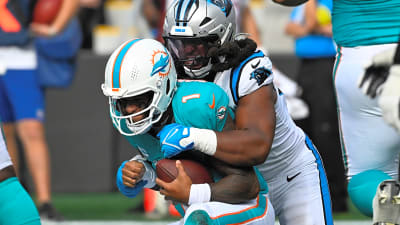
The most dangerous waves on the planet are a combination of sheer, jaw-dropping awe and power. Only the world's most talented (or foolhardy) surfers would dare approach waves such as these.
That's not to say serious incidents occur only in these types of waves. Take Aaron Gold's wipeout at Cloudbreak back in 2016, for example. By his standards, it was a relatively small day—but he still came close to drowning.
Despite these near misses, data shows that you're relatively safe while surfing. According to a survey conducted in Australia, the rate of major injuries is 1.79 per 1,000 hours surfed (though the rate increases for competitive surfers, surfers who perform aerial maneuvers, etc.). The data also shows that the most common cause of injury is impact with boards.
Surfing can be considered an extreme sport—and as with most extreme sports, serious injuries and fatalities do happen. However, these incidents occur in some places more often than others. Here, we've collated a list of the top seven deadliest waves.
Pipeline - Hawaii
Pipeline is the ultimate proving ground for surfers. It has also killed more surfers than any other wave on the planet, with seven fatalities since 1989 and countless other injuries.
The most recent major incident occurred in February 2025. Following a harrowing wipeout where pro surfer Makai McNamara was knocked unconscious, he was rescued by surfers and lifeguards and literally brought back to life on the sand. McNamara was rushed to Queen’s Medical Center, where doctors reportedly put him in a medically induced coma to help with the healing.
In December 2005, Malik Joyeux was hit by an eight-foot Pipeline wave and was killed after the wipeout. Pipeline is an incredibly dangerous wave that is only suited to surfing pros.
Teahupo'o - Tahiti
On a normal day, Teahupo'o, in Tahiti, is the heaviest wave on the planet and can look like something out of a cartoon. Its name roughly translates to "wall of skulls," referring to a historical battle where the victors built a wall from the skulls of their enemies.
In 2001, local surfer Briece Taerea was sucked over the falls and into the reef, causing a fatal injury to his back. A year before, Thierry Vernaudon was also killed at Teahupo'o. There have also been countless injuries here, as well. More recently, Tom Lowe took a brutal wipeout at the End of the Road, almost drowning after being scooped up from the reef.
Waimea Bay - Hawaii
Waimea Bay, one of the birthplaces of big wave surfing, is the venue for The Eddie, an invite-only, big wave paddle event that is convened only when the conditions meet the criteria (15 feet at 15 seconds).
The Eddie is held in memory of Eddie Aikau, a legendary surfer and first-ever lifeguard at Waimea Bay. Tragically, he died in 1978 as a volunteer crew member on the Hōkūleʻa, a watercraft that was attempting to re-create the migration route undertaken by ancient Polynesians. Just one day after launching, the boat capsized in stormy seas. Aikau paddled out on his surfboard to try to get help—but he never made it to shore, and his body was never found. The rest of the crew was eventually rescued by the U.S. Coast Guard.
The first recorded death at Waimea occurred in 1943: Dickie Cross died while attempting to paddle out during a strong northwest swell. In 1995, Donnie Solomon drowned after being caught by a large set during the paddle out. Then in 2015, Alec Cooke disappeared while paddling out for a night surf. He was never found.
Shipstern Bluff - Tasmania
Back in 2013, Dylan Longbottom, a seasoned big wave surfer, was out at Shippies. A rogue set took him by surprise and exploded his chest on the rocks. Famously, Dylan spent the rest of the day enjoying his time, drinking beers and hanging with buddies. It wasn't until a bit later that he went to the hospital. Doctors were astounded he was still alive; he was admitted to the ICU.
Shipstern Bluff is a wave that gives nightmares. Riddled with steps and 10-foot ledges, one wrong move and you're cooked. Despite this mutant wave looking like the Frankenstein monster's wave of waves, no surfer has ever died there. It's just created so many near-misses and moments of sheer terror that people tend to avoid the joint.
Mavericks - California
Mavericks is one of the most iconic waves in surfing history. It's also the venue for one of the most famous wipeout images in history.
Jay Moriarity's "Iron Cross" wipeout was one of the most dramatic moments at this spot. During a swell in December 1994, then 16-year-old Jay got caught by the lip and free-fell at least 40 feet to the flats—with Bob Barbour immortalizing the moment and landing the May 1995 cover of SURFER magazine in the process. Seven years later, in 2001, Jay tragically died in a freediving accident in the Maldives.
The only two deaths at Mavericks have been Mark Foo (1994) and Sion Milosky (2011). While riding the first wave of a set, Sion took a "liquid avalanche" on the head, pushing him 20 feet under water. He was found roughly a mile down the coast by Nathan Fletcher. It is a tragedy that most surfers still think about today.
Nazaré - Portugal
Nazaré is known as the biggest wave in the world. In 2024, German surfer Sebastian Steudtner set the record there for the biggest wave ever surfed: 93.73 feet. (He broke the previous record, which he also set in 2020 at the same location: 86.4 feet.) That is a lot of water moving, and you need some special watercraft to maintain speed on a wave of that size.
The only recorded death at Nazaré occurred in 2023. Brazilian surfer Marcio Freire, who starred in the 2016 documentary Mad Dogs, died while tow-in surfing at Nazaré.
Jaws - Hawaii

Despite its notoriety, no surfer has ever died at Jaws. However, there have been dozens, if not hundreds, of major injuries since the strapped crew buckled up out here.
In 2015, Australian big wave rider Mark Mathews suffered a brutal wipeout, separating his shoulder. And it was here that South African big wave surfer Matt Bromley experienced one of his worst wipeouts of his life—on a 50-foot day, nonetheless.
Jaws is one of those waves where most surfers look, say "nope" and choose to just watch from the cliffs. And for good reason. Taking a flogging out here is a logistical nightmare. Recues are difficult, and even sitting in the channel can send a shiver down your spine. This one is best left to the hardiest of big wave surfers.
More must-reads:
- CFB Week 7 winners, losers: Top 25 showdowns reveal a lot
- Former NBA champion calls for LeBron James to retire after this season
- The 'Team USA men's basketball coaches' quiz
Breaking News
Trending News
Customize Your Newsletter
 +
+
Get the latest news and rumors, customized to your favorite sports and teams. Emailed daily. Always free!








